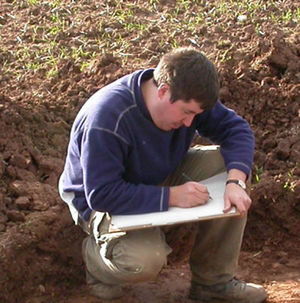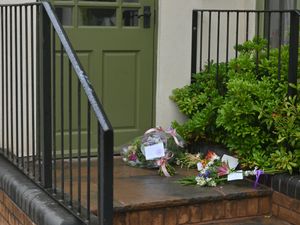Little reminders of a savage, last-man-standing siege uncovered in isolated field
In an isolated pasture bathed by anaemic sunlight – a lacework of spiders’ webs glistening on the unkempt grass – the echoes of history are strong.
The crack and crackle of muskets can almost be heard. The slow beat of distant drums still seems to resound centuries after the monotonous rhythm began.
The aroma of spent gunpowder hangs over the acres.
It is a rolling, rural location like any other in the unspoilt surrounding countryside. Yet this secret site represents the Holy Grail for those unlocking the English Civil War’s secrets. It is a 17th century conflict still shrouded in mystery.
This parcel of land, which straddles the Shropshire-Worcestershire border close to Cleobury Mortimer, is the missing piece of the jigsaw for historians chronicling the true nature of the conflict between Royalists and Parliamentarians and the scars it left behind.
Beneath the rich soil lies a treasure. Unlike the famed Staffordshire Hoard, it is not a treasure of gold and precious stones. Lead is the metal that has altered experts’ perception of the bloody war that raged across the Midlands. Tiny, worn lead balls, musket balls, litter the acres.
This picturesque location was once the setting for the only known example of true “guerrilla warfare” during the years of violence that ripped our country apart.
It has turned the belief that the war was much more than a series of bloody battles into reality.

The trajectory of musket shot, initially uncovered by a metal detectorist, reveals an Alamo-like encounter. Inside a long-lost timbered farmstead, a defiant group of men – perhaps hopelessly outnumbered – desperately fired on attackers attempting to take the building.
Stand in the centre of this now silent field and you can almost hear the whizz of musket balls from both sides, the cries of injured and dying men.
The long grass and meadow flowers would’ve been stained red on that desperate day.
Letters and documents have shown Cromwell’s war tore communities apart. Former friends were pitted against each other; the bad blood infected towns and villages. Therefore, street fighting and local skirmishes must have taken place. Settlements must have been turned into battle zones.
That was the theory. The dramatic find in Shropshire has turned it into a fact.
Our understanding of the war is remarkably sketchy and, by and large, restricted to the landmark battles.
We know plenty about Edgehill on October 23, 1642; Marston Moor on July 2, 1644; Naseby on June 14, 1645.
We know Charles II hid in Boscobel’s mighty oak following the 1651 Battle of Worcester.
But there were many who used the instability and violence to settle old scores. They seized the opportunity to grab what they felt was rightly theirs.
That is believed to be what happened at the farmstead. The rich earth bears witness to a grudge match ... to the death.
It was uncovered by a detectorist who wishes to be known only as “Bill” and the exact location remains under wraps.
Enough military debris has been retrieved to paint an intricate picture of the struggle. The spread of shot reveals those inside the building fired from windows at the mob below.
It’s hard to nail down an exact date for the clash, which took place in a loyalist stronghold, but there is no doubt this was a savage, last-man-standing siege.
The mix of round, unblemished musket balls and shot squashed and misshapen by striking walls proves the building was much more than an ammunition store. The land saw action.
Peter Reavill, former Ludlow-based finds liaison officer for Birmingham Museums trust who played a key role in the discovery, believes the war’s real driving force has been overlooked.
Forget politics – in many cases it was a licence to take arms against those near neighbours you despised. Loyalty to the monarchy or Cromwell, sometimes took a back seat to old-fashioned jealousy and greed.
Peter said: “What the Civil War was really about between the big battles – that’s the fascinating thing. One family may have held a grudge against another family for generations. The war gave them an excuse to thump people over the head.
“It had little to do with Royalists and Parliamentarians. It was an excuse to right wrongs and pursue personal vendettas.
“Thanks to Bill, we have found a skirmish site around a big farmstead and there was one hell of a ding-dong. There is a track of shot from the farmstead.
“Some are perfectly round, some are squashed after hitting a wall or tree. Therefore, we know the shot was not simply dropped at the site.”
The landmark discovery has gone near untouched by a press pack driven by dramatic, social media headlines. As clickbait, “Saxon gold and gems discovered in field” is much more effective than “Lot of old lead unearthed”. Peter understands that, but is frustrated by the journalistic tunnel vision. The Civil War cache is, in terms of uncovering unknown history, far more valuable than a bag of ancient trinkets.
“Bill has not turned up a huge number of silver coins or jewellery,” the 47-year-old admitted, “but he has discovered what this war meant to people.
“Skirmishes like this could happen in any village, and that’s the thing that’s really important.”
The aftermath of many more armed Civil War ghetto disputes remain out there, somewhere. But, without the fingerprints of chance finds, it’s akin to searching for needles in haystacks.
“I’m like a spider in the middle of a web,” Peter said.

“Others give me the information, I synthesise it. Discoveries of gold, like the Staffordshire Hoard, will always get the big, national coverage. Rightly so. Quite simply, that’s because they’re worth ‘X’ amount of money.
“It’s a good story, but a story that has been told again and again. The stories are invariably about the finder and what the finder is going to do with the money.
“This is just a collection of dull, grey balls, but they tell such an important story. If, during the First World War, 15 men from the same area were killed at the Somme and someone went there and found the bullets and the badges, that would be considered an amazing story.
“There is no difference between that and what Bill found, except for the fact that one battle was 400 years ago. It’s just that time gap.”
The Civil War drove a wedge between friends and families. It would have taken decades for the acid feuds to have been forgiven and forgotten.
The nation didn’t realise that until Bill’s metal detector clicked into life.
“We’ve become complacent about what war does to communities,” Peter added. “We’ve not had a proper invasion since William of Orange in 1688. Apart from World War Two, we’ve not had the spectre of war on our doorstep – and that didn’t come down to hand-to-hand fighting on British soil.
“People like Bill have the opportunity to go out and recover a bit of our history that no-one else knows. That’s very exciting.”
For many metal detectorists, the discovery of ancient gold will remain a pipe dream, but musket balls are frequently found.
Lead is a stable metal. The stray shots fired during the Civil War remains today at the spot where they landed.
They sell for mere chump change, which may explain media apathy surrounding the Shropshire find.
Online auction site eBay sold a collection of 10 from Arundel Castle for a mere £11.50. You can get your hands on one from the Battle of Marlborough for £6.
What has been gained from the secret site is far more valuable than cash. A treasure trove of knowledge has been exposed.
And treading on the field’s cloying soil a sense of what the Civil War really meant surfaces. It was spiteful, vindictive and chaotic.
Did those with the farmstead perish? We’ll never know.
Flesh, even bone, deteriorates and stays silent. Musket balls and bullets speak centuries after being fired.





